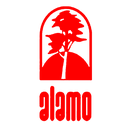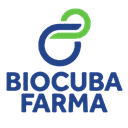Executive Secretary

VIII International Symposium on Chemistry and Pharmaceutical Sciences
STA
V International Symposium "Technological and Environmental Security"
Abstract
The present work is developed in the Caibarién Tannery Company located in the province of Villa Clara. This is an industry of great importance for the economic development of the country, since it processes 83% of the salted skins in Cuba. The waste generated by the entity is considered the most polluting in the province. At present, it generates around 1,870 t/year of solid waste from them, 1,550 t/year non-chrome and 320 t/year chrome, which do not have a final disposal. In addition to generating 250 t/year of a low-demand chrome by-product (lower cut). The objective of the research is to look for cleaner production alternatives (P+L), which allow an adequate management of solid waste that allows minimizing the negative impacts caused to the environment. In the case of non-chromium-plated waste, it can be used to obtain tallow, biogas production, glue and gelatin production, biodiesel, among others. In the case of chrome residues in the manufacture of bricks, asphalt modification, reinforcement in rubber mixtures, among other uses. The selected sustainable alternative will allow a better environmental performance of the entity by having an adequate final disposal of its waste. In addition, other industries will benefit from having raw material for the production of alternative materials, positively impacting the overall quality of life of the population of Caibarién.
Resumen
El presente trabajo se desarrolla en la Empresa de Tenería Caibarién ubicada en la provincia de Villa Clara. Esta es una industria de gran importancia para el desarrollo económico del país, pues procesa el 83% de las pieles saladas de Cuba. Los residuos generados por la entidad son considerados los de mayor poder contaminante de la provincia. En la actualidad la misma genera alrededor de 1870 t/año de residuos sólidos de ellos, 1550 t/año no cromados y 320 t/año cromados, que no tienen una disposición final. Además de generar 250 t/año de un subproducto cromado de poca demanda (recorte rebajo). El objetivo de la investigación es buscar alternativas de producciones más limpias (P+L), que permitan una adecuada gestión de los residuos sólidos que permita minimizar los impactos negativos ocasionados al medio ambiente. En el caso de los residuos no cromados, pueden emplearse en la obtención de sebo, producción de biogás, producción de pegamento y gelatina, biodiesel, entre otros. En el caso de los residuos cromados en la fabricación de ladrillos, modificación de asfalto, reforzante en mezclas de caucho, entre otros usos. La alternativa sustentable seleccionada, permitirá un mejor desempeño ambiental de la entidad al contar con una adecuada disposición final de sus residuos. Además otras industrias se verán beneficiadas al poder contar con materia prima para la producción de materiales alternativos, impactando positivamente en la calidad de vida global de la población de Caibarién.
About The Speaker

Ing. Juliet Alonso

Discussion




